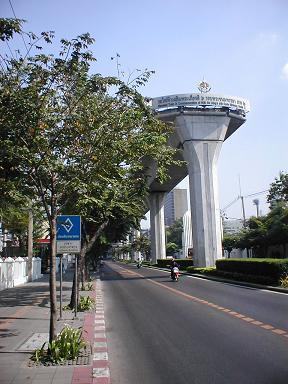I’m leaving Cambodia, catching the boat tomorrow afternoon to Chau Doc in Vietnam. Internet access probably won’t be as easy and cheap in the Mekong Delta (it’s only half a dollar an hour here, cheapest so far in SE Asia!), and I’d like to be away from computers to take things in, so I’ll probably disappear for a bit. Some final thoughts on Cambodia.
Since Battambang, I’ve only been in Siem Reap and Phnom Penh. They’re both highly touristy, so I feel more hassled by people rather than befriended. In Battambang, I’d managed to learn the Khmer numbers, and was starting to learn phrases like “How much is it?” and “Where is the toilet?”. Khmer is much easier for me than Thai and Burmese, as it isn’t tonal at all. Since then it’s been much harder to get support with Khmer, so I gave up. In Siem Reap people would laugh at me if I even said “Thank you!” in Khmer – I guess the thousands of tourists jetting in to see Angkor Wat don’t bother to learn it.
Lots of the moto drivers have second (third!) sources of income touting dubious businesses. More obviously these are cannabis (“I have high quality weed, very high quality!”) and prostitution (“You want lady?”). It’s also the only way to find the place where you can try out machine guns and grenades just outside Phnom Penh, as the guide books don’t mention it. Today a moto driver was so determined to sell follow on business to me, that after he’d checked I’d already been to the killing fields out of town, and that I didn’t want to go to the mountain pagoda, or to illegally try out guns (“English people like shooting!”, I turned out to be more French or German in this regard), that I’m somewhat unjustly sure he’d have offered to take me to Svay Pak if the brothels hadn’t finally been shut down by the government the night before I arrived.
Two highlights of Cambodia for me that are somewhat macabre – really lowlights, there to learn and understand what happened so recently, maybe to be better informed to stop it happening again: (Part of me says that this is still voyeuristic, which it is, but it is also learning about the truth)
- Talking to an exhibition currator in Battambang about his personal experiences slave labouring as a child on the rice fields for the Khmer Rouge, and later as a refugee trapped between many armies and landmines on the Thai border. I am so lucky for my childhood… What should I do to make sure more people have happy childhoods?
- Toul Sleng Genocide Museum, especially the photos of the people there. They looked so real, they are so real, it made it real. And some of the paperwork administering the prison, telling the soldiers to keep their uniforms properly on, that made it more real also.
And some positive things. I loved Lokesvara’s faces on the Bayon at Angkor. I enjoyed people being welcoming and friendly in Battambang. The rice porridge Bor Bor is fantastic for breakfast, if you can work out how to pronounce that O. Perhaps one day if in the right mood, I’ll come back here, and do the other route diagonally across the country – from Thailand, go round the coast to Sihanoukville, then up across through Phnom Penh and to the NE and Rattanakiri, then on to Laos.
Now, Vietnam.
(Argument still goes on at Conrad’s blog – thanks to everyone who’s given me a bit of support. I’ve learnt quite a bit. It’s always good to understand other peoples opnions better, especially those which are quite different from yours (or appear to be quite different)…)
